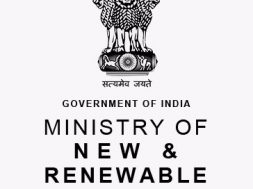
In Short : India’s solar capacity has reached 85.4 GW, significantly advancing the nation’s clean energy goals. This milestone underscores India’s commitment to renewable energy, contributing to reduced carbon emissions and sustainable development. The growth in solar capacity is a vital step towards a greener future.
In Detail : New Delhi : India’s solar energy installed capacity has surged to 85.4 GW, according to recent data from the Ministry of New and Renewable Energy.
This marks a significant increase from the 73.3 GW recorded at the end of 2023, underscoring the nation’s progress in its clean energy ambitions.
Rajasthan leads the country with 22.4 GW of installed solar capacity, followed by Gujarat at 14.3 GW. Karnataka and Tamil Nadu closely trail with 8.8 GW and 8.6 GW, respectively.
Industry experts attribute the recent growth partly to the commissioning of capacities at the Khavda Solar Park in Gujarat’s Kachchh district.
Additionally, clarification on the Approved List of Models and Manufacturers (ALMM) policy may have facilitated new solar capacity additions.
Vibhuti Garg, Director South Asia, Institute for Energy Economics and Financial Analysis (IEEFA), noted, “Technology innovation and innovative market mechanisms have been instrumental in bringing overall costs down. Solar is now the cheapest form of energy.
He added, “However, its variable nature necessitates the deployment of flexible generation sources for better integration of renewable energy.”
The 85.4 GW total capacity comprises 66.5 GW from ground-mounted solar plants, 12.9 GW from grid-connected solar rooftops, 2.6 GW from hybrid projects, and 3.4 GW from off-grid solar installations.
Despite overall growth, the rooftop solar sector lags behind, having reached only 12.9 GW. Experts suggest that high upfront capital costs remain a significant barrier, calling for innovative financial mechanisms to accelerate adoption.
In response, the government launched a nationwide scheme earlier this year, allocating Rs 75,021 crores to provide free electricity to one crore households installing rooftop solar.
The initiative offers subsidies ranging from Rs 30,000 to Rs 78,000 based on system capacity.
As of June 2024, India’s total renewable energy installed capacity, excluding large hydro, stands at approximately 148 GW. This includes 85.4 GW of solar, 46.6 GW of wind, 9.4 GW of biomass, and 5 GW of small hydro.
Charith Konda, Energy Specialist, IEEFA, stated, “In 2023, India added 10.02 GW of solar capacity, and in the first half of 2024 alone, it achieved 12.16 GW of installations.”
He highlighted, “The current solar power capacity positions India in a close race for the third spot alongside Japan, following China and the United States.”
India aims to install 500 GW of non-fossil fuel capacity by 2030, with solar expected to contribute at least 280 GW.
The Ministry of New and Renewable Energy plans to invite bids for 50 GW of renewable energy capacity annually for the next five years.
However, the country is currently falling short of its yearly targets for non-fossil fuel capacity addition, having achieved about 14 GW during the first half of 2024.
Konda highlighted ongoing challenges, including ‘delays in land acquisition, difficulties in getting approvals, delays in signing power purchase agreements, and obstacles in achieving timely financial closures.’
As India continues its push towards renewable energy, addressing these obstacles will be crucial in meeting its ambitious 2030 clean energy goals.














